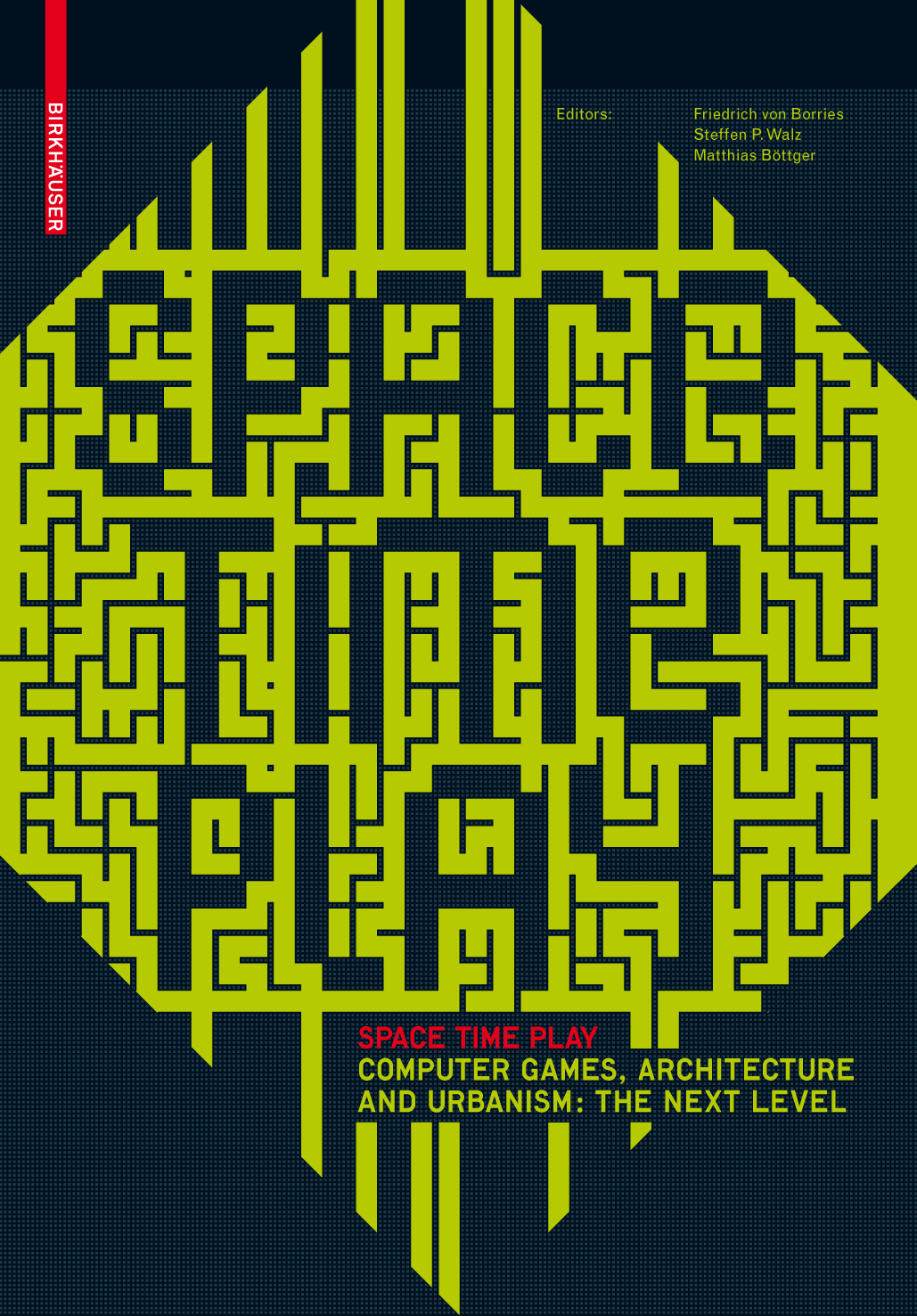Space Time Play Computer Games, Architecture and Urbanism: The Next Level, edited by Friedrich von Borries, Steffen P. Walz, Matthias Böttger (Birkhäuser/Springer Online bookstore). A big compendium of 140 writers, the book "explores the architectural history of computer games and the future of ludic space". The table of content is impressive and I am looking forward to read as it seems to be a blueprint about this topic.

You can fin on-line the introduction about "Why should an architect care about computer games and What can a game designer take from architecture?", which has some interesting perspectives and summarizes very well the issues as stake.
"The spaces of computer games range from two-dimensional representations of three-dimensional spaces to complex constructions of social communities to new conceptions of, applications for and interactions between existent physical spaces. (...) The spaces of the digital games that constitute themselves through the convergence of “space,” “time” and “play” are only the beginning. What are the parameters of these new spaces? To what practices and functional specifications do they give rise? What design strategies will come into operation because of them? "
Of particular resonance with my research will be:
"THE ARCHITECTURE OF COMPUTER AND VIDEO GAMES, traces a short, spatiotemporal history of the architecture of digital games. Here, architects are interested in the question of what spatial qualities and characteristics arise from computer games and what implications these could have for contemporary architecture. For game designers and researchers, on the other hand, it’s about determining what game elements constitute space and which spatial attributes give rise to specific types of interaction. Moreover, it’s not just about the gamespaces in the computer, but about the places where the games are actually played; playing on a living-room TV is different from playing in front of a PC, which, in turn, is different from playing in a bar.
The third level, UBIQUITOUS GAMES, on the other hand, demonstrates how real space – be it a building, city or landscape – changes and expands when it is metamorphosed into a “game board” or “place to play” by means of new technologies and creative game concepts. (...) What happens when the spaces and social interactions of computer games are superimposed over physical space? What new forms and control systems of city, architecture and landscape become possible? (...) The migration of computer games onto the street – that is, the integration of physical spaces into game systems – creates new localities (...) 4th level (...) how the ludic conquest of real and imagined gamespace becomes an instrument for the design of space-time. "
Why do I blog this? tons of material for my current research, I am expecting this to be good for thoughts for future projects. I also wrote a chapter with Fabien about how pervasive gaming can be seen as a re-interpretation of >la dérive situationiste (Guy Debord): a new way to experience the city environment.